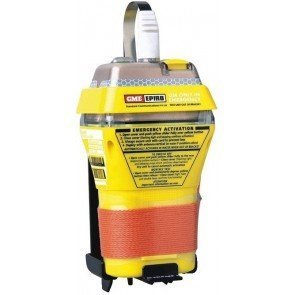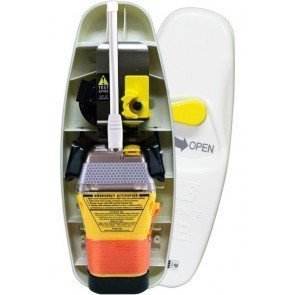EPIRBs
Emergency Position Indicating Radio Beacons (EPIRBs)/Emergency Beacons/ Personal Locator beacons are used on ships or boats, and Personal Locator Beacons (PLB's) are used on persons. PLBs are not a substitute for a personal EPIRB when adhering to State and Territory marine regulations.
For more detailed information, or to register your 406MHz distress beacon, visit the Australian Maritime Safety Authority website.
Ensure you have the correct distress beacon for your own safety and the safety of your crew. Registration of your 406 MHz Distress Beacon is valid for two years. A registration sticker will not be issued until your beacon registration details are validated as current. A fine may result if a current sticker is not affixed to a beacon during a safety equipment inspection.
From January 1st 2019, self-deploying EPIRBs will become a mandatory requirement onboard certain commercial vessels, as part of new marine safety laws announced by AMSA. Read more here.
Personal Locator Beacon, which notifies search and rescue agencies of distress by emitting a signal on the 406MHz frequency. Also known as Personal Distress/ Emergency Beacons or PLB.
PLB's utilise the COSPAS-SARSAT and GEOSAR satellite systems to pinpoint your exact location, using the beacon's HEX ID number. The PLB coordinates are then sent to the appropriate regional or local agency to begin rescue efforts. PLBs can be equipped with GPS technology that transmits your LAT/LONG for precise locating and faster rescue.
406MHz PLB's with GPS features have a location accuracy of 100m - 120m (A). Without GPS capability in your PLB, the location accuracy extends out to 5km (B).
For information on the individual State and Territory carriage requirements, click on the link to the relevant state authority below:
NEW SOUTH WALES NORTHERN TERRITORY QUEENSLAND SOUTH AUSTRALIA TASMANIA VICTORIA WESTERN AUSTRALIA
IMPORTANT DISTRESS BEACON INFORMATION

GME MT403FG EPIRB (Discontinued)
GME MT403G 406MHz EPIRB with GPS (Discontinued)
KTI SA1G 406 EPIRB with GPS (Discontinued)
Spot 2 Personal Satellite Tracker (Discontinued)
GME MT400 406MHz EPIRB (Discontinued)
GME MT406G 406 EPIRB with GPS (Discontinued)
ACR ResQmate 406MHz EPIRB (Discontinued)
EPIRB 121/243 - Marine (Discontinued)
McMurdo A5 Smartfind 406 EPIRB (Discontinued)
SatAlert RB6 406MHz EPIRB (Discontinued)
GME MT600 Manual EPIRB (Discontinued)
GME MT603G 406MHz Manual & Water Activated EPIRB with GPS (Discontinued)
GME MT603FG 406MHz Manual/Water Activated EPIRB with Auto Release & GPS (Discontinued)
Ocean Signal SafeSea E100G GPS EPIRB (Discontinued)
KTI SA3G 406 EPIRB with GPS (Discontinued)







































